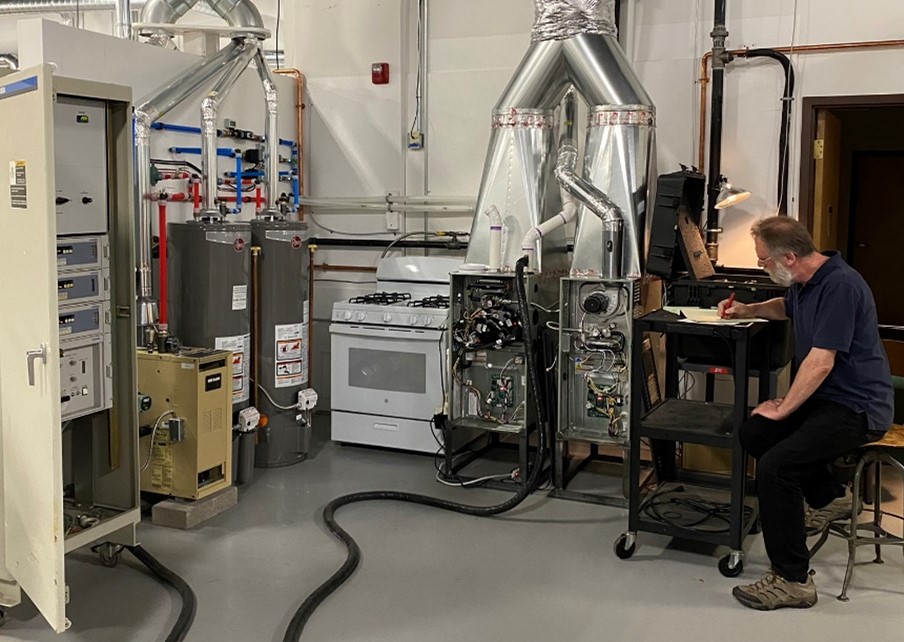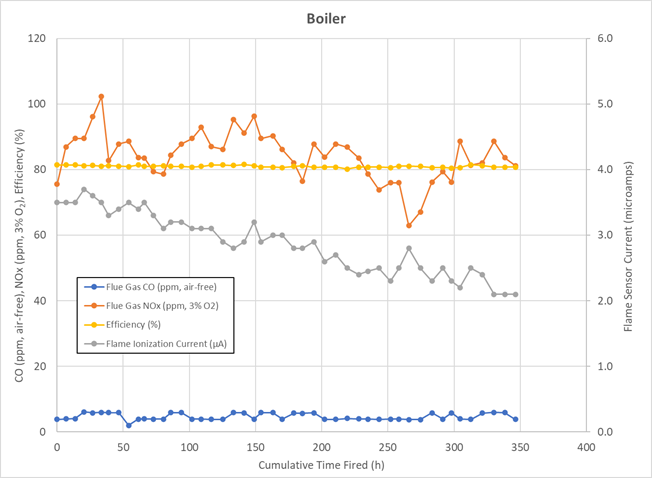Siloxane in Renewable Natural Gas

The objective of this project was to determine the maximum concentration for siloxanes in renewable natural gas (RNG) that will preclude significant safety, reliability, performance and maintenance impacts for North American residential appliances. Siloxanes are organic molecules that contain silicon atoms linked with oxygen atoms (Si-O-Si). These molecules are found in certain consumer products. Thus, siloxanes appear in waste streams supplied to landfills and wastewater treatment plants.
Appliance testing was conducted in two rounds. In Round 1, eight appliances were operated for 400 hours on natural gas containing a relatively high concentration of siloxane (12.6 mg Si/Nm3). In Round 2, appliances exhibiting to the most significant performance issues in Round 1 testing were operated until failure on natural gas containing a lower concentration of siloxane (4.2 mg Si/Nm3). The test results for the most sensitive appliance were analyzed to determine the effect of siloxane concentration on time to failure. Then, by extrapolation, a recommended siloxane concentration limit for RNG was determined.

